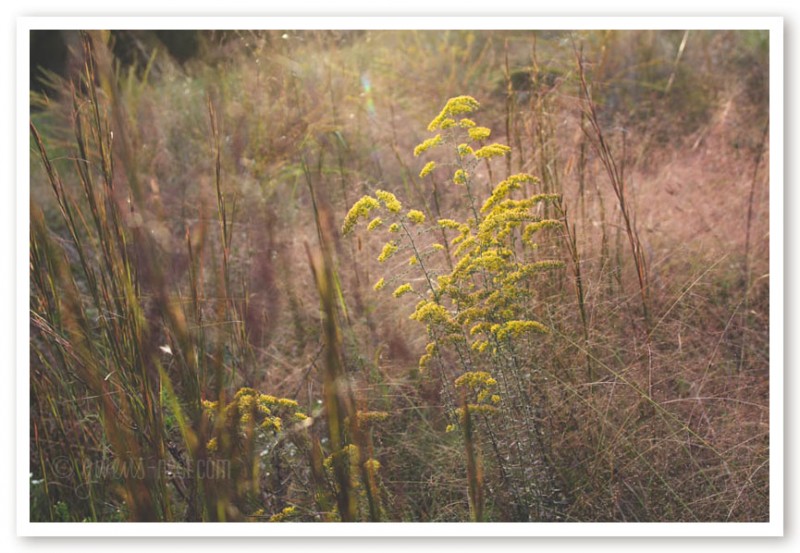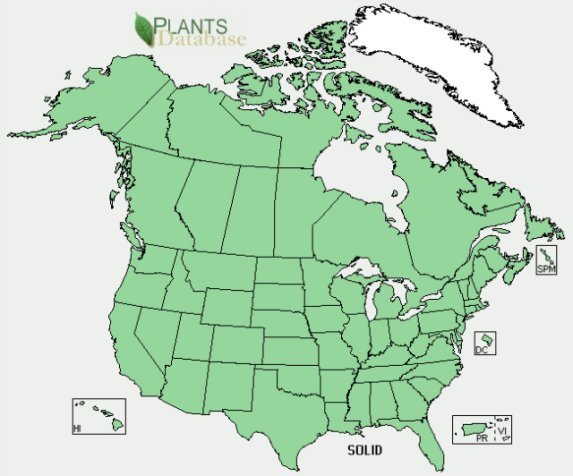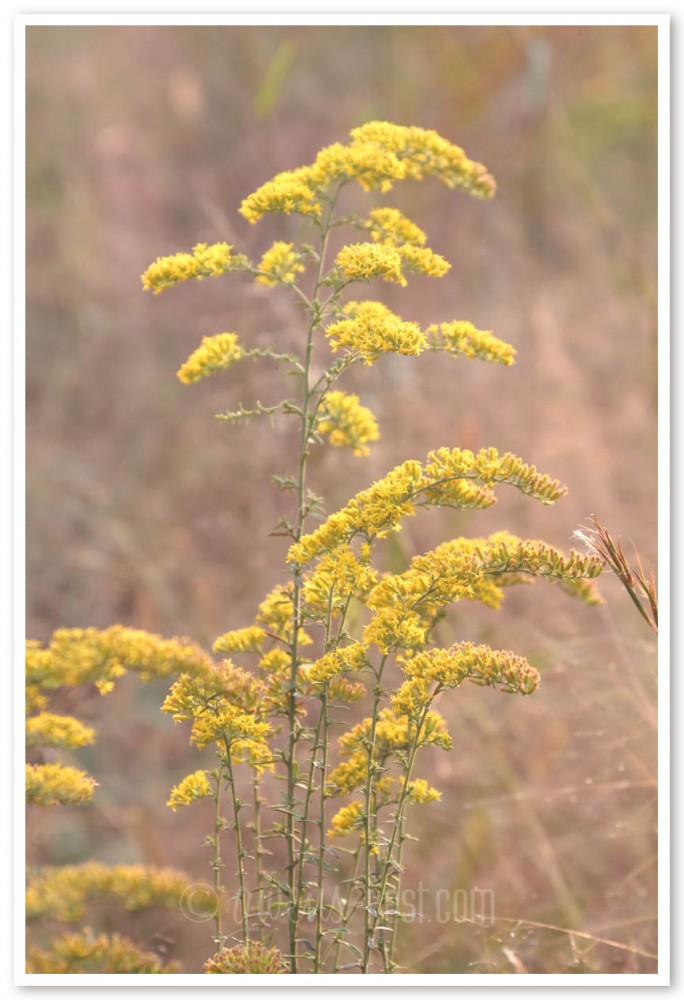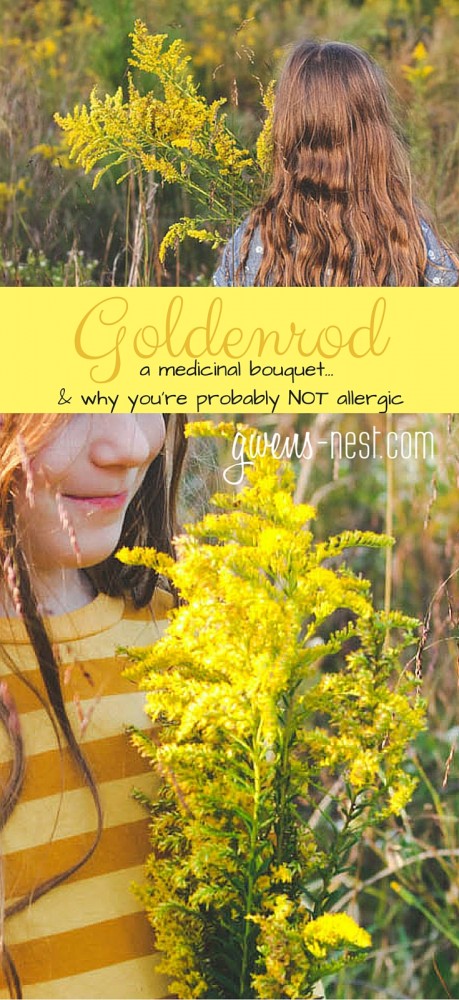
Goldenrod herb is a new project for us this year. It’s an herb that grows prolifically here, but we’re just now getting to know this gorgeous plant. And after reading about all that it does, I can’t believe it’s taken me so long to play with it.
Today, we’ll talk about the myth of goldenrod allergy, harvesting & distribution, and then we’ll talk about uses- how it was used historically and in modern times.
Next week, we’ll look at a couple of easy remedies to make with goldenrod.
Is Goldenrod the Cause of Allergies?
Many people overlook goldenrod completely because they fear that it’s a fall allergen. This is an unfortunate case of mistaken identity with another fall bloomer: ragweed.1

Though ragweed and goldenrod are in the same (HUGE) Asteraceae/Compositae family, the pollen of Goldenrod (solidego) species is sparse, sticky and not airborne. So it’s highly unlikely that it’s a contributor to seasonal allergies. According to herbalist Susun Weed,
Only wind-pollinated plants — like ragweed (Ambrosia artemisifolia), which blooms at the same time as goldenrod, and has an especially irritating pollen — make enough pollen, and spread it widely enough, to cause allergic reactions.3
However, some people do report contact dermatitis1 from touching this herb, so it’s always wise to test out personal sensitivity to an herb prior to internal use.
Harvesting Goldenrod
We picked golden drenched armloads of this herb. I can’t even begin to guess the species, but we’re going to get to know this lovely herb.
No part of vegetation in the United States is so conspicuous and gaudy in the autumnal months, and at the same time furnishes to the botanist so difficult a task of discrimination, as the multitudinous and Protean genera Solidago ~Bigelow, American Medical Botany 1817-21

While there are MANY varieties, they all have similar actions although it’s fun to learn which things your local varieties to best. As our experience with this herb grows, we’ll learn to field test (no pun intended) the differing flavors and nuances.
Special consideration should be given to the variability of the flavors and scents within the great many spp. of Solidago. If you have multiple species near you (and you probably do) take the time to taste the leaf and flower of each kind, and get to know the subtle differences. The most aromatic tend to be more helpful for mood elevation, kidney problems and external use, while the more bitter or bitter/aromatic spp. are especially nice for digestive issues and the astringent/aromatic types are great for upper respiratory issues and general mucus membrane over-secretion. These type of subtleties apply to all herbs, but Goldenrod tends to be a great example of it because of the many spp. and sensory variances even within a single species or subspecies.4
– Kiva Rose, herbalist
You probably have seen goldenrod where you live, since this is a distribution map for the U.S.

If the ground is not frozen solid, goldenrod will probably grow there. One friend describes it as “Weedie McWeederson.” This and plantain are great first herbs to wildcraft and get to know, since they are so prolific and so very, very useful.
The best time to harvest and dry goldenrod is *just* before the flowers open. The reason for this is that once they fully open, they tend to fluff out with seeds when drying. We were a little late this year, but I was able to use fresh in a tincture, and we did find a less mature species to dry for teas.
We simply picked the above ground parts, shook off any creepy crawly residents, and brought it home to enjoy and use.

Goldenrod Use- Historic to Modern
Goldenrod is an herb that every home should get acquainted with, since it has such a wide range of uses…from the flu to the battlefield, this is an herb to have on hand.
Here in the U.S., the FDA does not test herbs, but relies on third party testing to give recommendations on herbal safety. So data is sparse. But in Europe, the Commission E *does* test herbs alongside medications, and they provide recommendations on how to best use herbal preparations as well as medications. The Commission E Monographs are a great tool to research modern testing of herbs. Goldenrod is used in Europe to treat inflammation from UTI, and to prevent and treat kidney stones.1
Goldenrod has the following properties, according to King’s American Dispensary (an antique materia medica resource)6
- diaphoretic-induces sweating
- styptic- stops bleeding
- carminative- relieves gas
- diuretic- increases passing of urine
- aperient- to relieve constipation
- tonic- to produce or restore proper tone/tightness to tissues
- astringent- to tighten, contract, or cause discharge
- stimulant- temporarily quickens some vital process or the functional activity of some organ or part

Historically, goldenrod has been used in the following ways5,6
- to heal wounds (external preparations)
- as a diuretic- to encourage increased urination to get rid of excess fluids, or in cases of suppressed urination in infants
- to treat tuberculosis
- as a diaphoretic for illnesses- a preparation of warm tea induces sweating
- to treat mouth ulcers and sore throats
- to stop bleeding- the Cherokee used it on the battlefield as a styptic to stop bleeding.
- to stop vomiting
- for amenorrhoea (lack of menstrual cycle)
- for gas, upset stomach, and colic
- to relieve stomach cramping
- to relieve constipation
- the dried leaves were used as a tea substitute, called “Blue Mountain Tea”

In modern herbal medicine, herbalists are still using this plant for many of the same virtues that were enjoyed historically, but have also begun to use it for the following:2,4
- as a trophorestorative for kidney problems
- astringent varieties for upper respiratory and as an expectorant for sticky mucous
- as a tincture for seasonal allergies and cat dander allergies and “hay fever”
- for diabetes and
- for bladder infections- as an anti-inflammatory
- in oil for arthritis, muscle pain or spasms, and joint pain relief
- for fevers (hot tea)
- for fungal infections- as a wash or soak- the saponins in goldenrod are specific to candida, so it’s especially useful against vaginal and oral thrush, or as a sitz bath.
- non-allergy related chronic fungal infections- it’s actions are enhanced by using it with bee balm or alder
- venous insufficiency- failure of the veins to adequately circulate the blood, especially from the lower extremities
- edema/swelling (though not recommended in cases of kidney or heart conditions2)
- as a mouth rinse for ulcers and sore throat
- as “irrigation therapy”- taking goldenrod with lots of fluids to increase urine flow in an effort to treat inflammatory diseases of the lower urinary tract, as well as stones in the kidney or urinary tract
- tuberculosis- especially infections that have become active again after a period of inactivity
- eczema- as a poultice or soak
- itching, swelling, or pain
- enlargement of the liver
- internal bleeding
- to reduce inflammation (internally and externally)
- to address lung congestion
The exact mechanism is not known, but it appears that irritation in the gut causes a reflex reaction in embryologically related areas (lungs and kidneys), resulting in a tissue response to flush away the offending substance. This provides goldenrod with an interesting paradoxical effect, on the one hand being astringent and anti-catarrhal and on the other hand increasing the production of thin, easily eliminated mucous. The precise degree to which either effect occurs appears to depend upon the tissue state: tissues congested with thick, sticky mucous will benefit from a thinning of the mucous which makes for easier elimination; tissues producing too much mucous and tending to weakness will be benefited by a drying and toning action. – Paul Bergner4
Contraindications for Goldenrod
Herbalist Rosalee de la Forȇt says, “I haven’t heard of any Solidago variety being harmful, but it is always best to know exactly what you are harvesting and using.”4
It’s always wise to consider your own personal health issues and to talk with your doctor prior to using any new medicine, plant, or food. Some doctors will not prescribe goldenrod to a patient who has a history of hay fever (although others use goldenrod specifically for treating hay fever.) If you have reactions to the Asteraceae or Compositae family then it’s possible that you may react to goldenrod. This (huge) family includes ragweed, chrysanthemums, marigolds, daisies, and many, many others.
When getting to know a new plant, it’s smart to watch for any reactions externally. When sampling an herb, it’s wise to start small and watch for your body’s response. It seems that there will be a small cross section of people who are intolerant or allergic to even common “safe” herbs.

Who knew that one little bouquet could be such a veritable medicine chest! I hope this post inspires you to go gather some armfulls of goldenrod.
Join me next week, we’ll talk about how to preserve and prepare your own remedies with the lovely solidago.
Resources to read more
- University of Maryland Medical Center- Goldenrod Herb
- WebMd- Goldenrod Herb
- Herbalist Susun Weed- Glorious Goldenrod
- Herbalist Rosalee de la Forȇt- Goldenrod
- Henrietta Kress- Antique Materia Medica Resources
- Kings American Dispensary, 1898 solidago
Follow me on Pinterest and never miss a natural remedy!
Follow Gwen’s Nest’s board Gwen’s Nest Herbs & Natural Health on Pinterest.

I have goldenrod essential oil but don’t know what to do with it. Any suggestions? It has a very strong smell so I’ve never experimented with it.
I’d try it in a blend for viruses. 🙂 Maybe diluted and mixed with rosemary and used in a chest rub?